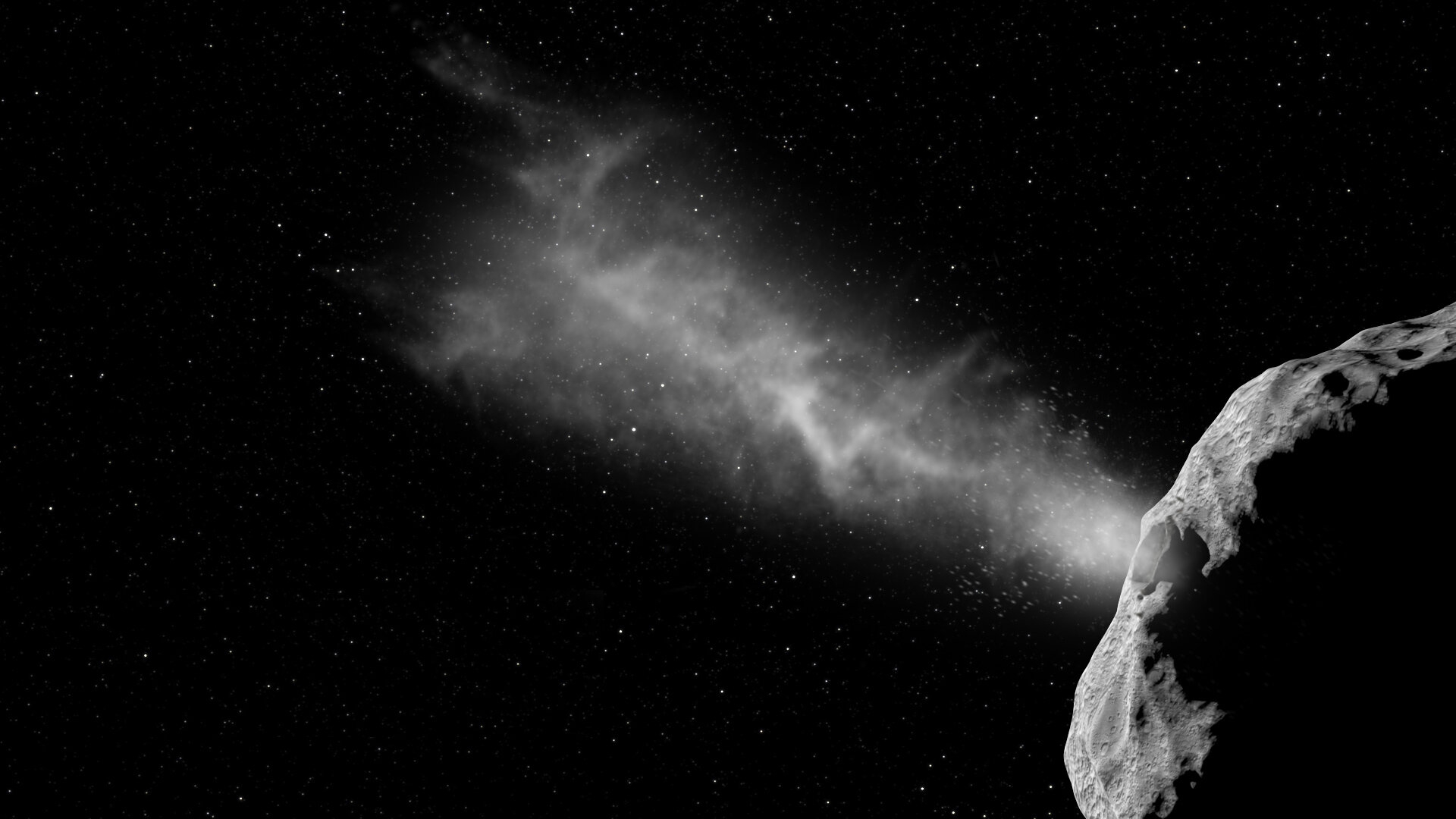The otherwise unremarkable double asteroid of Didymos and Dimorphos made headlines as the target of NASA’s successful Double Asteroid Redirect Test (DART) mission. With new details about the system emerging, astronomers have put together a hypothesis of how this strange double asteroid came to be.
It starts with spin. Any solid body if it spins fast enough will lose pieces of itself as the centrifugal force overwhelms gravity. This is especially true of asteroids, which aren’t very big to begin with and are only loosely held together. Recently a team of astronomers have used this fact to propose a plausible formation mechanism for Didymos and Dimorphos.
In this scenario long ago Didymos spun up far too quickly. It could have been from a glancing collision or just from too many gravitational interactions with neighbors. Once it spun up it began losing mass, which formed a ring surrounding it. Initially this ring would be in what is called the Roche limit of the asteroid. The Roche limit is where the gravitational tidal force from a parent body is stronger than the ability for material orbiting it to hold itself together. So within the Roche limit Dimorphos couldn’t form .
But through many interactions some of the material can migrate away from the ring and go beyond the Roche limit where it would eventually coalesce. That material that escaped would eventually become the little moon Dimorphos.
The astronomers estimate that Didymos had to lose at least 25% of its mass in order to form Dimorphos in this manner. This model also predicts that Dimorphos will have a very irregular shape because it was built up from the slow accumulation of many smaller objects, which is in line with what we observe.
While NASA’s DART mission was an overall success, showing that we can conclusively nudge the orbit of an asteroid if we need to, the mission has another side benefit. It helps us explore the complicated, intricate lives of some of the smallest, and most often ignored, objects in the solar system.


It’s interesting to ALSO consider the YORP mechanism of spin-up / spin down, where differential absorption and radiation of photons will slowly torque an asteroid around.
I’m curious whether the change in shape would trigger the ‘Brazil nut effect’ where the largest grains in a granular mix eventually vibrate their way to the top. When this is added into YORP, you might get a feedback loop of more spin leads to more large boulders which then leads to more spin.
Also should consider ‘sYORP’ where the same effects are boosted by sublimation. If there are frozen clods of icy dust in a rubble pile, they might ‘Brazil nut’ their way to the surface and provide a volatile boosted spin.
I’m not familiar with the ‘Brazil nut effect’, but a loss of volatiles would certainly cause the asteroid to spin up due to conservation of angular momentum as it shrank in size.
The synopsis of the sYORP paper-
The Formation of Striae within Cometary Dust Tails by a Sublimation-Driven YORP-like Effect – Jordan K. Steckloff &
Seth A. Jacobson
Sublimating gas molecules scatter off of the surface of an icy body in the same manner as photons. This means that for every photon-driven body force, there should be a sublimation-driven analogue that affects icy bodies. Thermal photons emitted from the surfaces of asymmetrically shaped bodies in the Solar System generate net torques that change the spin rates of these bodies over time. The long-term averaging of this torque is called the YORP effect. Here we propose a sublimation-driven analog to the YORP effect (Sublimation-YORP or SYORP), in which sublimating gas molecules emitted from the surfaces of icy bodies in the Solar System also generate net torques on the bodies. However, sublimating gas molecules carry ~104-105 times more momentum away from the body than thermal photons, resulting in much greater body torques.